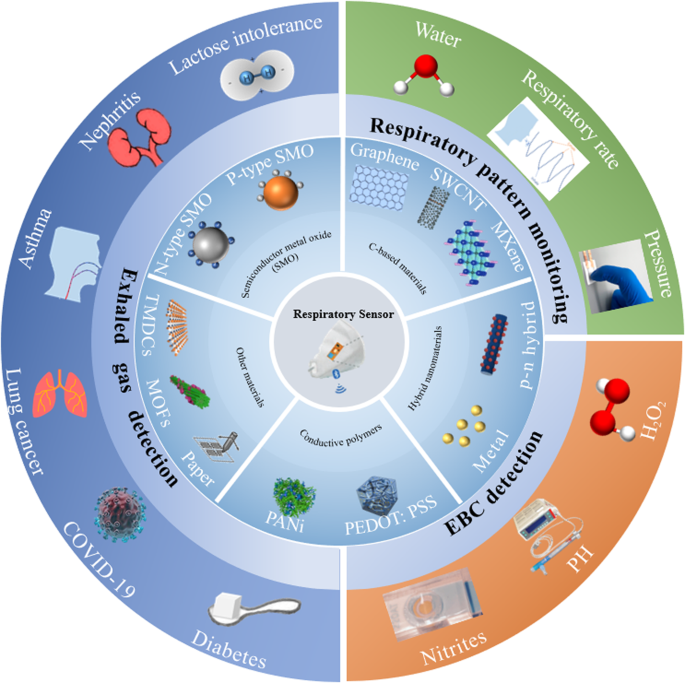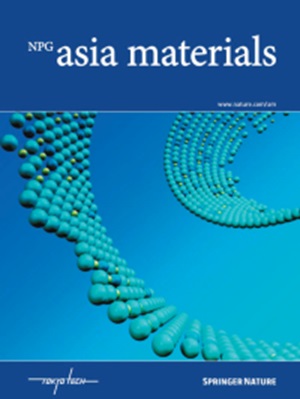用于健康监测的可穿戴呼吸传感器
IF 8.3
2区 材料科学
Q1 MATERIALS SCIENCE, MULTIDISCIPLINARY
引用次数: 0
摘要
对人体健康状况进行实时监测和预警是可穿戴设备的一项重要功能。随着物联网的发展和医学对早期检测和治疗的推动,可穿戴设备在未来将变得越来越重要。与传统传感器相比,具有机械柔软性和可变形性的可穿戴传感器能够适应应用场景中出现的几何非线性和运动引起的变形,从而确保在各种复杂的工作条件下输出稳定有效的信号。在过去的几年里,人们开发了各种新型传感材料,用于检测呼吸的各种生物标记物。在此,我们总结了可穿戴呼吸传感器的最新创新,重点介绍了主要的传感材料、设计、传感机制和临床意义。最后,我们概述了可穿戴呼吸传感器未来的挑战和发展方向,以促进可穿戴呼吸监测领域的进步。本文章由计算机程序翻译,如有差异,请以英文原文为准。


Wearable respiratory sensors for health monitoring
Real-time monitoring and early warning of human health conditions is an important function of wearable devices. Along with the development of the Internet of Things and the medical drive for early detection and treatment, wearable devices will become increasingly important in the future. Compared with traditional sensors, wearable sensors with mechanical softness and deformability are able to adapt to geometric nonlinearities and deformations caused by motion that occurs in application scenarios, thus ensuring stable and effective signal output under various complex working conditions. Various novel sensing materials have been developed for the detection of various biomarkers of respiration over the past few years. Here, we summarize the latest innovations in wearable respiratory sensors, highlighting the dominant sensing materials, designs, sensing mechanisms, and clinical implications. Finally, the future challenges and directions of wearable respiratory sensors are outlined toward promoting advancement in the field of wearable respiratory monitoring. Wearable devices provide an alternative way to clinically diagnose respiratory diseases in a non-invasive and real-time manner. In this review, we summarize the recent developments in the field of wearable respiratory sensors, including the methods to synthesize various sensing materials, the ways to improve respiratory sensing performances, and the feature comparison among different sensing materials. We also summarize the concentrations, sources and associated diseases of various biomarkers in exhaled gas. Finally, we discuss current trends in the field to provide predictions for the future trajectory of wearable respiratory sensors.
求助全文
通过发布文献求助,成功后即可免费获取论文全文。
去求助
来源期刊

Npg Asia Materials
MATERIALS SCIENCE, MULTIDISCIPLINARY-
CiteScore
15.40
自引率
1.00%
发文量
87
审稿时长
2 months
期刊介绍:
NPG Asia Materials is an open access, international journal that publishes peer-reviewed review and primary research articles in the field of materials sciences. The journal has a global outlook and reach, with a base in the Asia-Pacific region to reflect the significant and growing output of materials research from this area. The target audience for NPG Asia Materials is scientists and researchers involved in materials research, covering a wide range of disciplines including physical and chemical sciences, biotechnology, and nanotechnology. The journal particularly welcomes high-quality articles from rapidly advancing areas that bridge the gap between materials science and engineering, as well as the classical disciplines of physics, chemistry, and biology. NPG Asia Materials is abstracted/indexed in Journal Citation Reports/Science Edition Web of Knowledge, Google Scholar, Chemical Abstract Services, Scopus, Ulrichsweb (ProQuest), and Scirus.
 求助内容:
求助内容: 应助结果提醒方式:
应助结果提醒方式:


